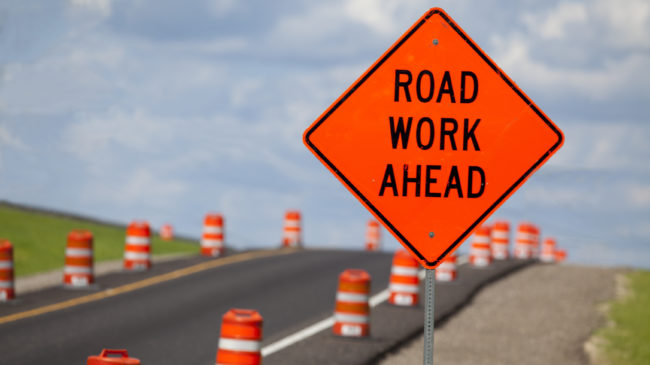As the coronavirus pandemic continues, “more than 85 percent of all Americans have been ordered to stay at home,” Business Insider notes. And, with so many businesses and schools closed, traffic volumes have decreased 50-70 percent. A University of California-Davis shows California has experienced a “60 percent drop in traffic volume — when compared to the same period last year,” the Los Angeles Times reports.
While it may take months, the shelter-in-place orders across the country will be lifted and automobile use should return to normal as the nation tries to resume economic activity. In the interim, state departments of transportation (DOT) are taking advantage of the reduced traffic levels to build projects more quickly. Several states have extended the time of their lane closures. Virginia DOT, which avoided closing lanes for construction work on weekdays before 9 am or after 3 pm, is now closing lanes around-the-clock on busy roadways, including I-395 and SR 7.
Likewise, Colorado Public Radio reports:
CDOT says it is looking to take advantage of fewer people on the roads due to coronavirus to complete complicated road projects.
The agency is asking their contractors to put together more aggressive work plans in areas with provable drops in traffic. The hope is to get a head start on major upgrades like the Central 70 Project and I-25 Gap project near Colorado Springs.
In Reno, Nevada, the Regional Transportation Commission (RTC) Washoe is taking advantage of business closures in an effort to speed up projects at the urging of local businesses:
“Business owners expressed strong support of the plan to expedite construction operations, which will result in early completion of this section, and may result in an earlier completion date for the overall Virginia Street Project.”
…The road segment under construction will be closed for 24 hours each day, seven-days-a-week until April 17, which is when the shutdown is tentatively scheduled to end.
If DOTs take this approach, they may also find it is easier to hire additional highway workers than in the recent past. Prior to the pandemic, the strong economy and low unemployment rates meant some states were having trouble finding enough qualified workers. And the workers who were available and qualified were commanding higher salaries due to the competition for workers. Now, with a major economic slowdown that has already seen many workers laid off or furloughed, state DOTs may be able to quickly add qualified employees to their workforces to help speed up construction of their needed projects.
It’s important to note that DOTs taking this approach need to take every precaution they can, however. With the coronavirus testing problems the United States has suffered, it probably isn’t realistic or possible for construction site managers to test their employees. And an effort to speed up construction could backfire and become a shutdown zone if workers get COVID-19. For example, the Quad-City Times in Iowa reported:
Construction on the new Interstate 74 bridge has come to a halt after at least one worker tested positive for COVID-19, according to a union working on bridge construction. Brian Atkins, business manager for Rock Island-based Ironworkers Local 111, said he was notified Monday that the 40 ironworkers currently on the job from his union should not report to work for at least a week as part of the project-wide shutdown. “I was informed yesterday from the contractor that they had a worker that had a positive test for COVID,” Atkins said Tuesday. “They informed me they’re shutting the job down for a week to monitor and see what’s going on.”
A second worker also is being quarantined, awaiting a test result, Atkins said. Neither is a member of Local 111.
“I was told by the contractor (Lunda Construction) that they don’t think our guys were exposed, but we really don’t know,” he said. “After a week, they’re going to re-evaluate the plan.”
Work on that project has resumed but it’s clear DOTs and construction companies need to take the necessary precautions. When construction employees need to be closer than six feet to each other, for example, they should consider wearing masks and gloves. And state officials should be flexible with workers who may be at an increased risk. In Michigan, the DOT is coordinating with contractors:
…the state is taking action so if there are delays on projects because workers feel uncomfortable going to work during the crisis, contractors won’t get penalized for those delays. “In cases where a contractor feels they cannot begin or continue work because of concerns about their workforce, supply chains or other things related to COVID-19, the delays will be excusable and damages will not be assessed,” Cranson said. One benefit for road crews has been less traffic on the roads, with Gov. Gretchen Whitmer’s stay-at-home order. “If the stay at home order is a prolonged thing, one benefit is not having to worry about the safety of our workers with all the traffic whizzing by,” Cranson said.
With travel and economic activity so limited, Goldman Sachs “is now forecasting a real GDP sequential decline of 34 percent for the second quarter on an annualized basis,” Reuters reports. If state and regional transportation departments are carefully able to use this period of time to finish key road projects ahead of schedule, their work could help the economy and workers rebound when cities are able to safely open back up.

